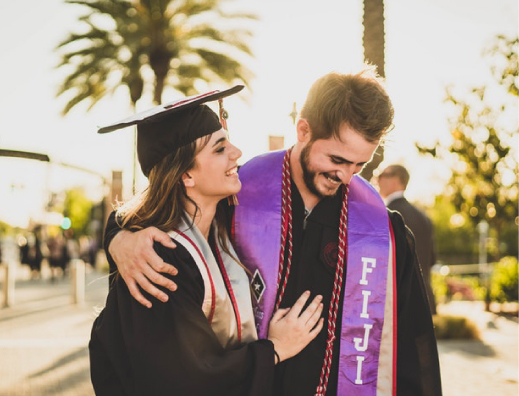* Visa/residence permit, Books
Academic Bachelor's degree
GMAT
Motivation and initiative
Academic Referee
In your application, you have to verify your English proficiency. You can do this by providing 1 of the following English proficiency test scores:
TOEFL IBT: a minimum of 92 points overall and a minimum of 22 points for each sub-score (TOEFL institution code: 9011). The TOEFL Home Edition is allowed for the September 2022 intake.
IELTS (Academic test): a minimum of 6.5 overall and a minimum of 6.0 for each sub-score. The IELTS indicator test is not allowed.
Cambridge Assessment English
Certificate in Advanced English: 180 points overall and in each skill or
Certificate of Proficiency in English: 180 points overall and in each skill.
Test scores must also conform to the following guidelines:
Make sure you schedule your English proficiency test before the application deadline.
Test scores received after the application deadline are accepted, as long as your English proficiency test was taken before the application deadline.
Your English proficiency test score cannot be more than 2 years old before the start date of your programme. For example, if you are applying for the September 2022 intake we do not accept English proficiency tests taken before September 2020.
Be sure to plan your test on time; test dates fill quickly and it can take several weeks for you to receive your results. Applications without a sufficient score or with a test date after the application deadline, will not be accepted.
The Master's in Conservation and Restoration of Cultural Heritage is a unique and innovative interdisciplinary programme aimed at students with a passion for cultural heritage and the desire to combine theory and practice. It offers nine branches of specialisation within Conservation and a separate track in Technical Art History.
Conservation and restoration: From theory to practice
The Master’s in Conservation and Restoration of Cultural Heritage combines theory with practice and humanities with science. A conservator preserves and conserves cultural heritage, working closely together with scientists, (technical) art historians, archaeologists and anthropologists. The conservator represents an essential link to the object or artwork and plays a key role in multidisciplinary collaborative projects. The programme will introduce you to the theory and practice of conservation, combining specialist knowledge and skills with the interdisciplinary approach required in the broader field of cultural heritage preservation.
Specialising in conservation or technical art history
Right from the outset, you have the unique opportunity to choose one of the nine branches of specialisation offered within Conservation or the separate track of Technical Art History. Each of these areas of specialisation has its own focus and you will be trained to become an expert in your chosen field from day one. Be aware that the nine conservation specialisations and the separate technical art history track are offered in alternating years. Each year, five specialisations will be open for application.
Becoming a conservator
The Master’s in Conservation and Restoration of Cultural Heritage is a two-year programme and marks the first step to becoming a fully qualified conservator. Following the Master’s, you can transition into a two-year Advanced Professional Programme in which you work in a conservation studio and complete one or more internships to achieve the international level required to work as an independent professional conservator in your field of specialisation.
More information click :here
Programme structure
The programme has a workload of 120 ECTS:
66 ECTS object-focused practical training
36 ECTS theory courses
18 ECTS thesis
The practical projects will focus on one of the nine disciplines. At least one of the practical components will comprise an interdisciplinary project that also draws on other disciplines. The thesis is the result of an individual project. You will also take part in a programme of presentations, lectures and symposia.
Specialisations
The Master's in Conservation and Restoration of Cultural Heritage comprises ten specialisations:
Book and paper
Contemporary art
Glass and ceramics
Historic interiors
Metals
Paintings
Photography
Technical Art History
Textiles
Wood and furniture
Thesis
The individual research project is related to the practical project and leads to a thesis of 18 ECTS. The research topic will be determined in consultation with your thesis supervisor.
Master's theses by Conservation and Restoration graduates from previous years
Master’s programme: made up of three parts
The entire programme for becoming a conservator-restorer consists of three parts:
a Bachelor’s degree certificate in humanities or science, possibly including a minor in Conservation and Restoration (30 ECTS);
the two-year Master's programme;
a two-year Advanced Professional Programme (for all specialisations except Technical Art History).
Advanced Professional Programme
With the exception of graduates from the Technical Art History specialisation, students who have completed the Master’s degree in Conservation and Restoration can apply for a place on the Advanced Professional Programme, in which they will do a conservator-restorer traineeship. Admitted students will receive a grant that covers the tuition fees and living costs.
This postgraduate track is done at a training studio following the Master’s programme and consists of a closely supervised practical traineeship in which the trainee conservator-restorer takes part in conservation and research projects, working with increasing independence.
Throughout the entire postgraduate track there are also lectures, gatherings and presentations to help build up an understanding of business dealings, management, law, ethics and communication. There are also seminars with fellow students from within the chosen conservation discipline and others. A six month internship is also part of this track.
The UvA is responsible for assuring teaching quality. Quality assurance for the conservation of the objects performed during the programme are the responsibility of the accredited conservation studios, in close consultation with the client/owner.
Upon completion of the postgraduate track you will have satisfied the international criteria for conservator-restorers and will be able to establish yourself as an independent conservator-restorer in one of the following disciplines: book and paper; photography; glass and ceramics; historic interiors; wood and furniture; metals; contemporary art; paintings and textiles.

Becoming a conservator
After you have applied to continue your training in the Advanced Professional Programme, you will receive a grant once you are admitted. The Advanced Professional Programme offers you the chance to become a trainee conservator (RIO) and follow an intensive programme of supervised learning. Through participation in conservation and research projects, you build the competence to undertake conservation projects independently and gain experience in dealing with more complex conservation issues. Upon completion of the Advanced Professional Programme, you will become certified as a qualified conservator.
The job market
Qualified conservators may work for a wide range of public or private institutions involved with cultural heritage care. You may choose to work in a museum, art gallery, library, or scientific laboratory, to set up as an independent practitioner, or to join an existing commercial studio. Some of our alumni currently work, for example, at the Armémuseum, the Hamilton Kerr Institute, Plowden and Smith, The Rijksmuseum, Mauritshuis and Van Gogh Museum.
An academic career
Graduates of the programme who are passionate about research are also well-equipped to pursue in academia. You can go on to enrol as a PhD at the University of Amsterdam, another Dutch university or a university abroad.

Insurance: €420 per year